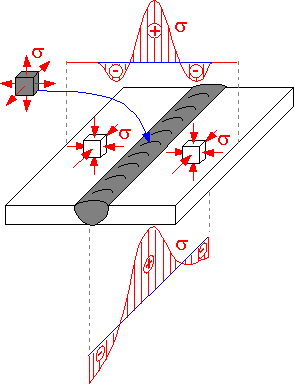 Unhomogenous heating causes local thermal expansion of metals. This is reflected in residual stress after cooling. Residual stress is a tensile stress in the center of a weld. Tensile stress in a weld is compensated by compressive stress in base metal.
Unhomogenous heating causes local thermal expansion of metals. This is reflected in residual stress after cooling. Residual stress is a tensile stress in the center of a weld. Tensile stress in a weld is compensated by compressive stress in base metal.
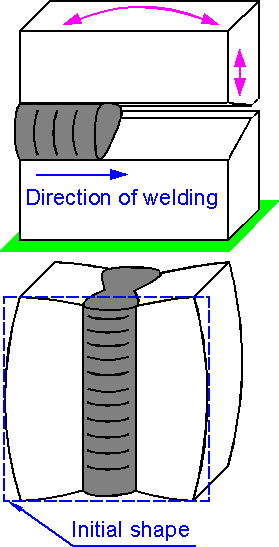 Weld metal is squeezed as it cools. During welding, edges move relative to each other, mostly perpendicular to the welding direction. Residual stress results in shrinkage of the structure.
Weld metal is squeezed as it cools. During welding, edges move relative to each other, mostly perpendicular to the welding direction. Residual stress results in shrinkage of the structure.
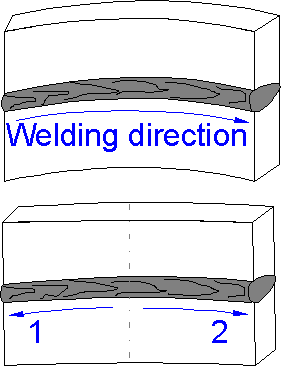 The choice of welding sequence affects the distortion of the welded structure. If a welder uses opposite directions, the distortion is smaller.
The choice of welding sequence affects the distortion of the welded structure. If a welder uses opposite directions, the distortion is smaller.
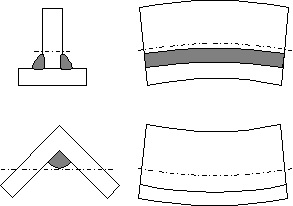 If a weld is below the neutral axis the shape is concave up. If a weld is over the neutral axis the shape is concave down.
If a weld is below the neutral axis the shape is concave up. If a weld is over the neutral axis the shape is concave down.
 The angle b is small for small weld depths. The angle is not too large if the weld depth is equal to the thickness of the plate.
The angle b is small for small weld depths. The angle is not too large if the weld depth is equal to the thickness of the plate.
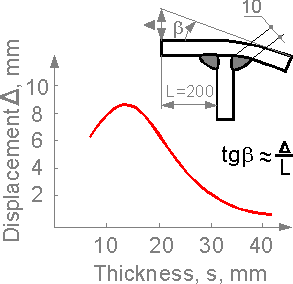 A similar effect can be observed in a tee-joint. For thin plates the displacement caused by residual stress is rather large, it decreases as thickness increases.
A similar effect can be observed in a tee-joint. For thin plates the displacement caused by residual stress is rather large, it decreases as thickness increases.
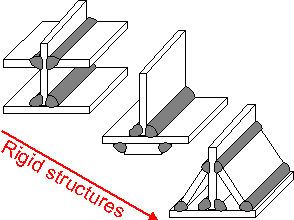 Residual stress is at a maximum for a rigid structure with a large number of welds and with closed loops. The structures are shown in order of increasing rigidity.
Residual stress is at a maximum for a rigid structure with a large number of welds and with closed loops. The structures are shown in order of increasing rigidity.
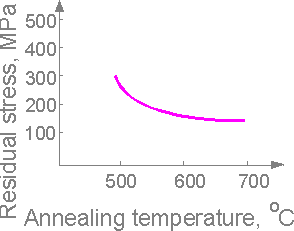 The residual stress decreases as annealing temperature increases. There are annealing procedures that can reduce residual stress to zero.
The residual stress decreases as annealing temperature increases. There are annealing procedures that can reduce residual stress to zero.
 2015-08-13
2015-08-13 315
315







